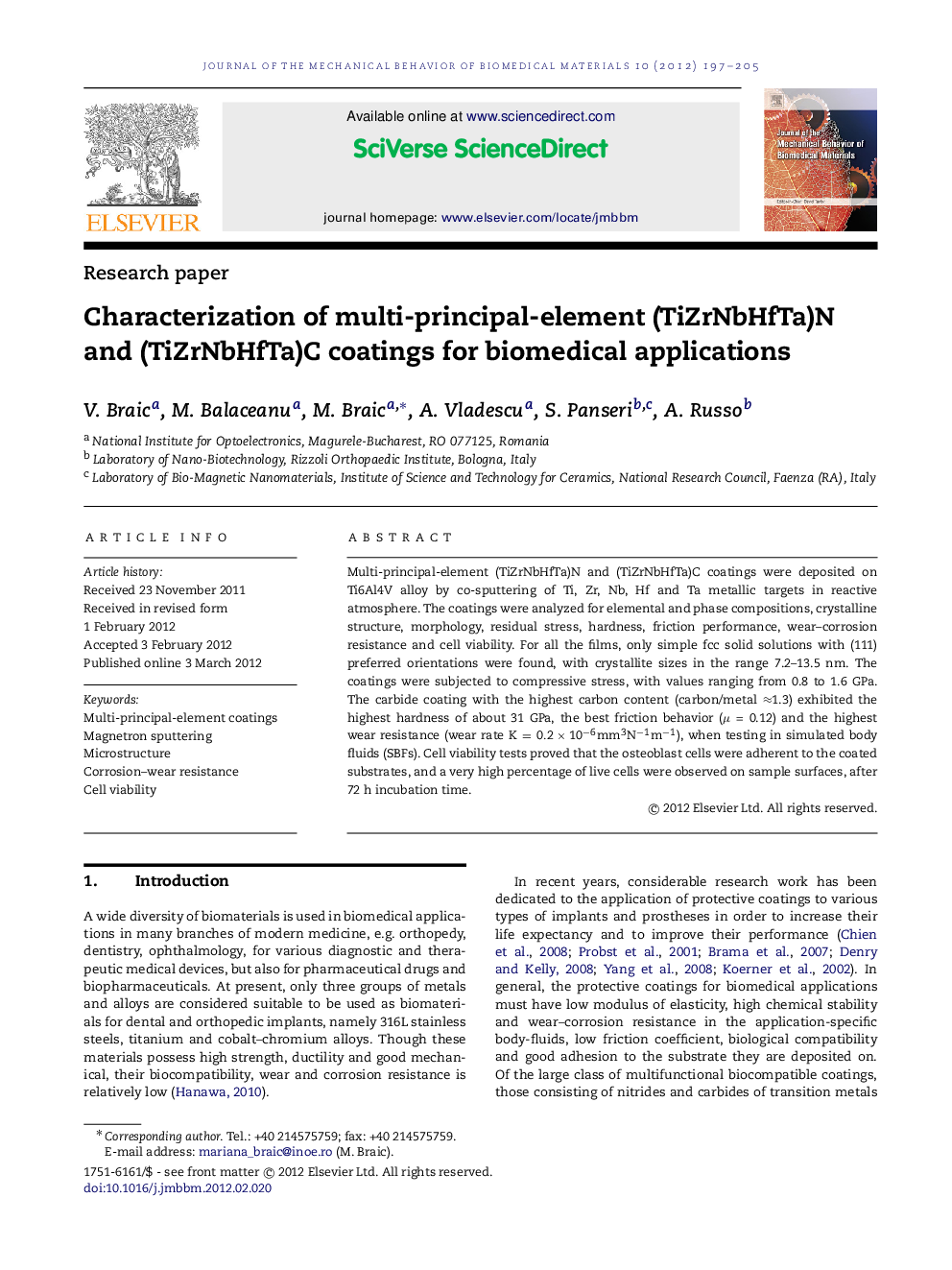| Article ID | Journal | Published Year | Pages | File Type |
|---|---|---|---|---|
| 811059 | Journal of the Mechanical Behavior of Biomedical Materials | 2012 | 9 Pages |
Multi-principal-element (TiZrNbHfTa)N and (TiZrNbHfTa)C coatings were deposited on Ti6Al4V alloy by co-sputtering of Ti, Zr, Nb, Hf and Ta metallic targets in reactive atmosphere. The coatings were analyzed for elemental and phase compositions, crystalline structure, morphology, residual stress, hardness, friction performance, wear–corrosion resistance and cell viability. For all the films, only simple fcc solid solutions with (111) preferred orientations were found, with crystallite sizes in the range 7.2–13.5 nm. The coatings were subjected to compressive stress, with values ranging from 0.8 to 1.6 GPa. The carbide coating with the highest carbon content (carbon/metal ≈≈1.3) exhibited the highest hardness of about 31 GPa, the best friction behavior (μμ = 0.12) and the highest wear resistance (wear rate K=0.2×10−6mm3N−1m−1), when testing in simulated body fluids (SBFs). Cell viability tests proved that the osteoblast cells were adherent to the coated substrates, and a very high percentage of live cells were observed on sample surfaces, after 72 h incubation time.
► (TiZrNbHfTa)N and (TiZrNbHfTa)C coatings were prepared by magnetron sputtering. ► The coatings exhibit simple fcc solid solutions with (111) preferred orientations. ► The carbide coatings with C/metal ratio ≈≈1.4 show superior tribological performance. ► MG63 osteoblast-like cultured cells were adherent to all the coatings. ► After 72 h incubation, high percentages of live cells were observed on surfaces.
